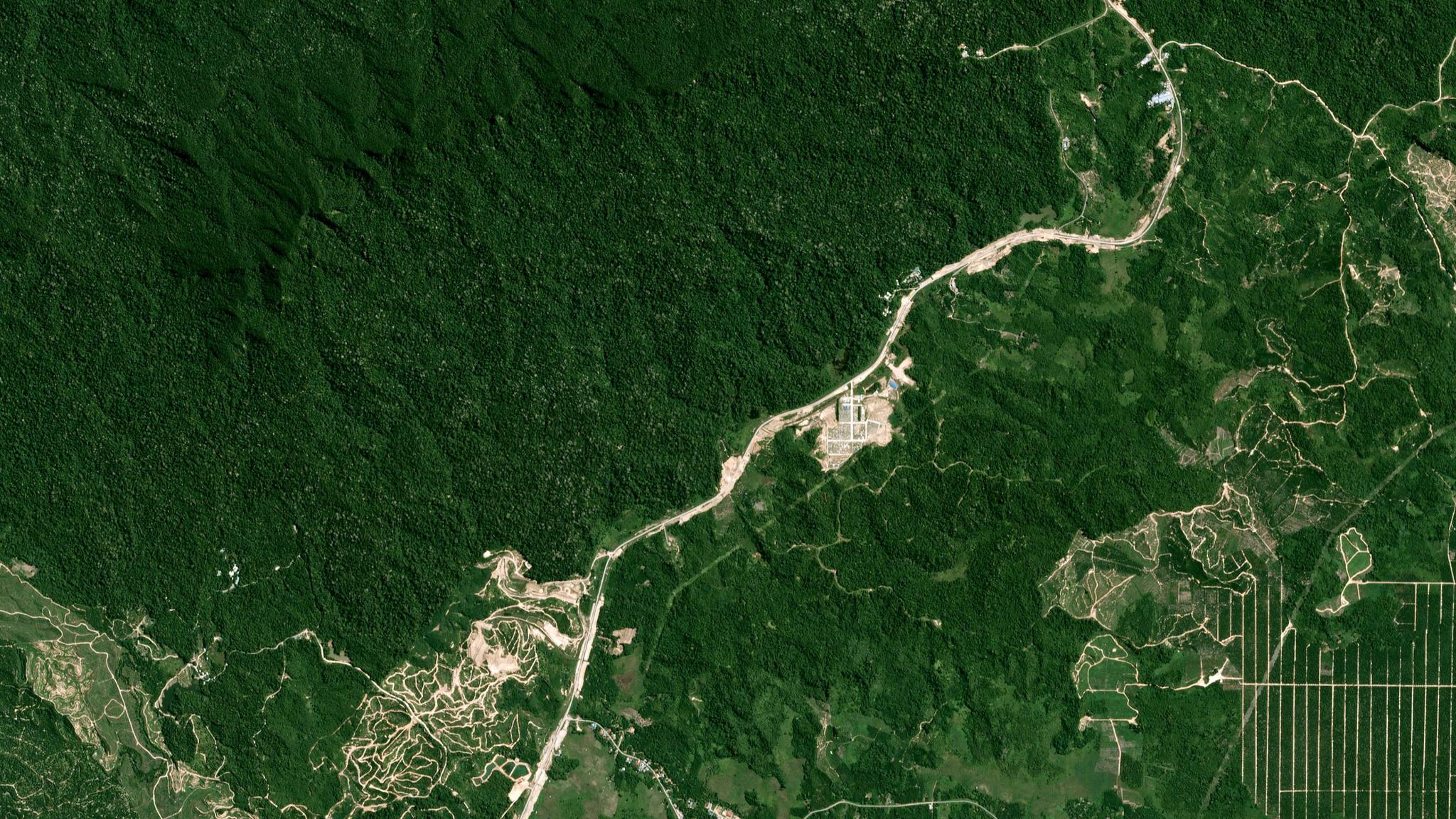Monitoring Mass Flowering Events from Space
Image above: White flowering tree crowns spot the dense green forest in Lambir Hills National Park in Borneo, Malaysia on May 5, 2019. © 2019, Planet Labs PBC. All Rights Reserved. In the dense tropical forests of Southeast Asia, scientists are monitoring the phenomenon of “general flowering” which is the synchronous mass flowering of a variety of tree species at irregular intervals. This often happens after 1 to 10 years of sterility. The biological phenomenon occurs from a few weeks to a few months, followed by mass fruiting in the region. Some hypothesize that various tree species likely flower at one period to enhance the change of pollination and disperse the pressures of predation. Using PlanetScope data, researchers from University of Hawai'i at Mānoa, University of Zurich, Kochi University, the Forest Department Sarawak in Malaysia, and the Japan Agency for Marine-Earth Science and Technology explored the spatial and temporal dynamics of “general flowering” in Borneo to better understand climate-vegetation dynamics. With our satellite data, the team could analyze the last “general flowering” event in the Lambir Hills National Park, which occurred in 2019. The PlanetScope images revealed the white flowing crowns of trees dotting the tops of the forest canopy. With our archive of data, the researchers could identify changes in flowering from January 1, 2019 through August 31, 2019, determining that the event was a whole-park phenomenon with the flowering peak in May of 2019. “This study reports the first successful satellite-based observations of a GF event and suggests the possibility of regional-scale characterization of species-level phenology in the dipterocarp forest, key information for biodiversity conservation in Southeast Asia,” said the authors. Find the full study in Ecological Research. --- Interested in learning more about monitoring blooming events? Check out our new ArcGIS exercise featuring PlanetScope data: Barro Colorado, in Panama, is the most intensively studied tropical forest in the world. Once a year the trees in the island bloom to a vibrant golden yellow and only lasts 1-2 days. This exercise evaluates changes in the Guayacan trees.. The goal is to identify the number of trees that bloom during this period. This is an introductory workflow for how to import, visualize and run analysis on satellite imagery within ArcGIS Pro. The flowering area is so large and the period of flowering is so short, using high spatial and temporal resolution satellite imagery is an effective way to track the change. Pre bloom: February 21, 2022 In bloom: March 10, 2022 This exercise is hosted on Planet University: Lab Exercise: Orbital Bloom!

Ready to Get Started
Connect with a member of our Sales team. We'll help you find the right products and pricing for your needs.


